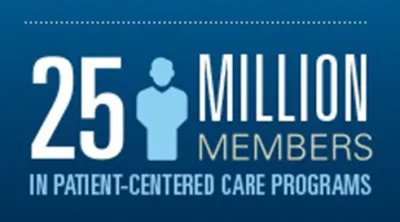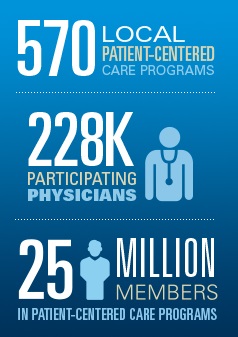Transforming healthcare delivery: A pathway to affordable, high-quality care in America

 Healthcare spending in the United States is $2.9 trillion per year, giving us the dubious distinction of having the most expensive healthcare system in the world. This spending strains the budgets of American families, businesses and taxpayers yet does not lead to superior outcomes. In fact, the U.S. healthcare system underperforms when compared to other industrialized nations.
Healthcare spending in the United States is $2.9 trillion per year, giving us the dubious distinction of having the most expensive healthcare system in the world. This spending strains the budgets of American families, businesses and taxpayers yet does not lead to superior outcomes. In fact, the U.S. healthcare system underperforms when compared to other industrialized nations.
That’s because too much of this money is not well spent. Studies estimate that 30 cents of every healthcare dollar goes to care that is ineffective or redundant. Americans need more effective, efficient and coordinated care that helps patients get healthy faster and stay healthy longer.
Now is the time to establish an innovative healthcare system that provides people with high-quality, coordinated, affordable care. Blue Cross and Blue Shield (BCBS) companies are working aggressively to lead this necessary transition away from the fee-for-service payment model to a system that links reimbursement to the quality of care and improved patient health.
What started as a small initiative many years ago has grown to a BCBS portfolio of more than 570 locally-developed, quality care programs across the country, that provide coverage to more than 25 million Americans. Community by community, The Blues® are working to improve quality and rein in costs, tying more than $71 billion in medical claims (one in five dollars spent annually) to programs that focus on prevention, wellness, improving access to care, disease management and coordinated care.
The implementation of programs that provide incentives to doctors and hospitals for delivering high-quality care that improves outcomes for patients, rather than rewarding medical professionals for the volume of services they provide, has already produced positive results for patients. BCBS members in local quality care programs have experienced fewer unnecessary emergency department visits, fewer hospital admissions and readmissions and reduced hospital infection rates. They’ve also achieved better outcomes in key quality measures, including breast cancer screening, improved cholesterol control and adherence to best practices for treating diabetes.
The transformation of the healthcare system is complex and requires close collaboration between public and private sector insurers, hospitals, doctors and nurses to ensure that every patient receives healthcare that is of the highest quality possible. BCBS companies have identified four key strategies that are critical to the success of this transformation.
- Change the way doctors and hospitals are paid to establish meaningful financial incentives that reward better patient outcomes and satisfaction.
- Work with doctors and hospitals by providing them with the tools and data they need to transform their practice and provide high quality care.
- Help people be active partners in their own healthcare by providing wellness incentives with educational tools that make healthcare quality and costs transparent.
- Promote savings in the healthcare system. These include services that add cost without adding value, such as unnecessary or duplicative testing, improved communication across settings of care; high pharmaceutical costs; and fraud, waste and abuse across the system.
BCBS companies are building the pathway to a better healthcare system, but the transition can gain momentum more quickly and effectively through public-private partnerships. To learn more about how BCBS companies are building the pathway to a better healthcare system, including specific recommendations on how the public and private sector should partner in creating a healthier America, read our white paper.
